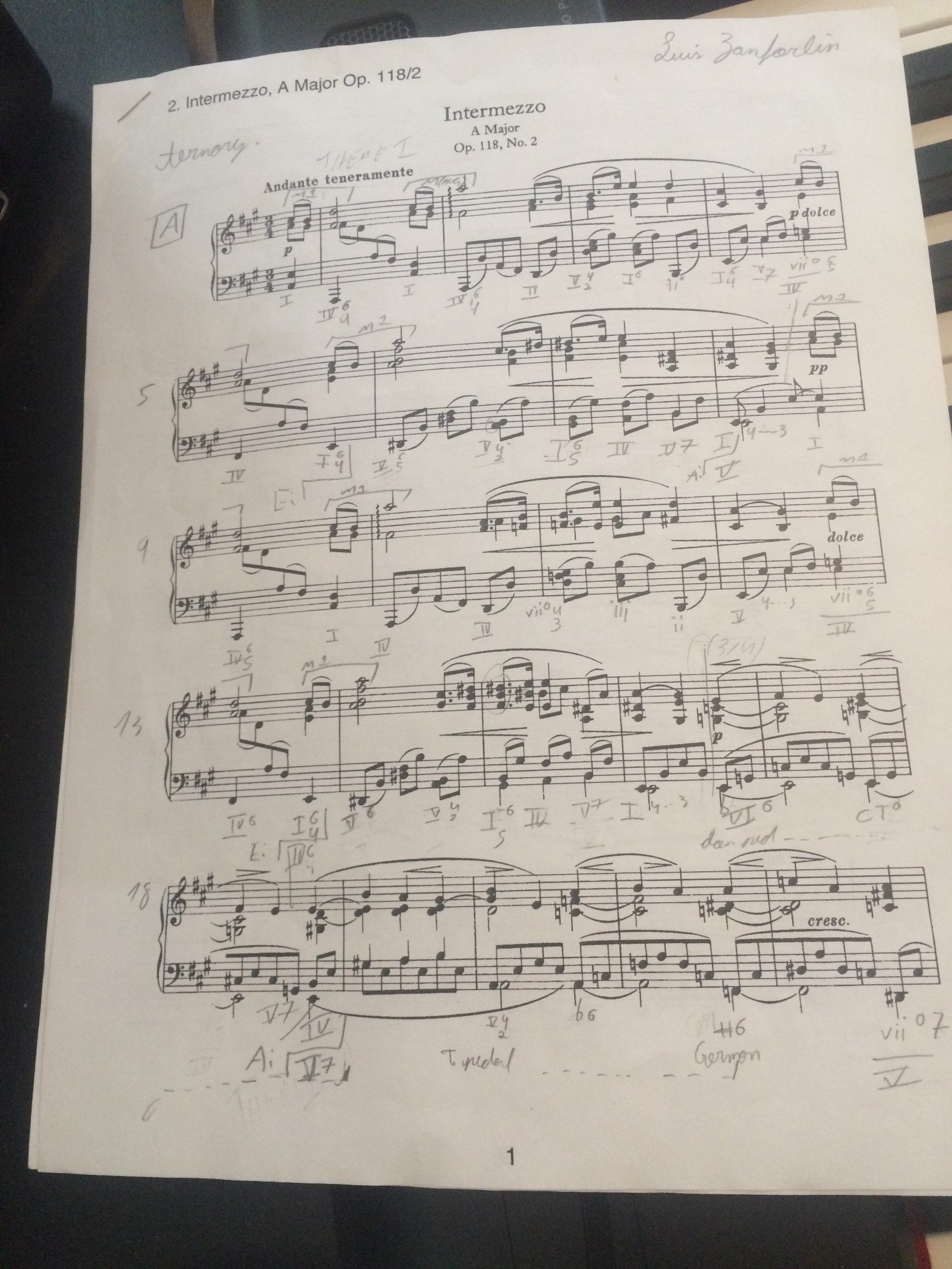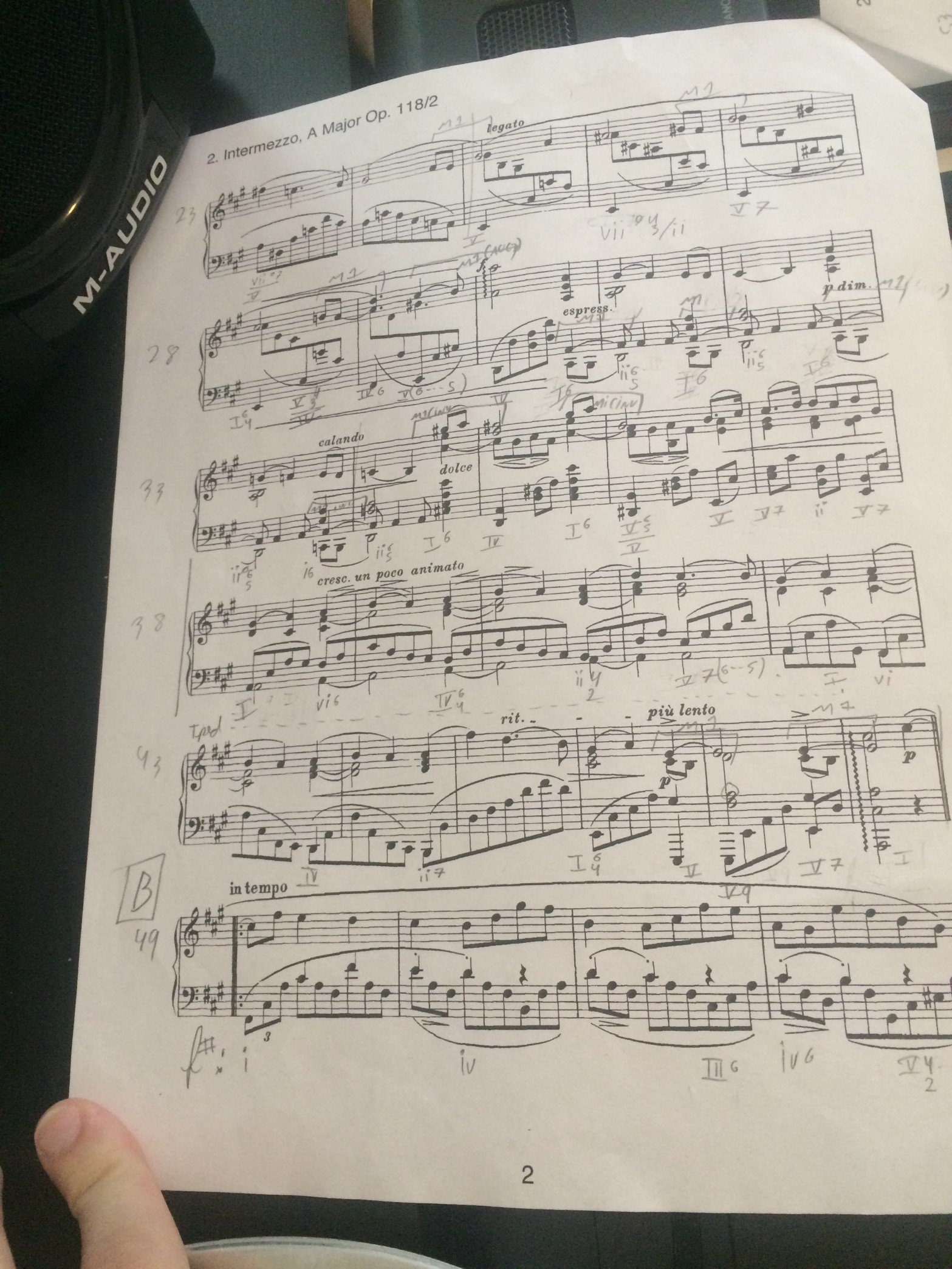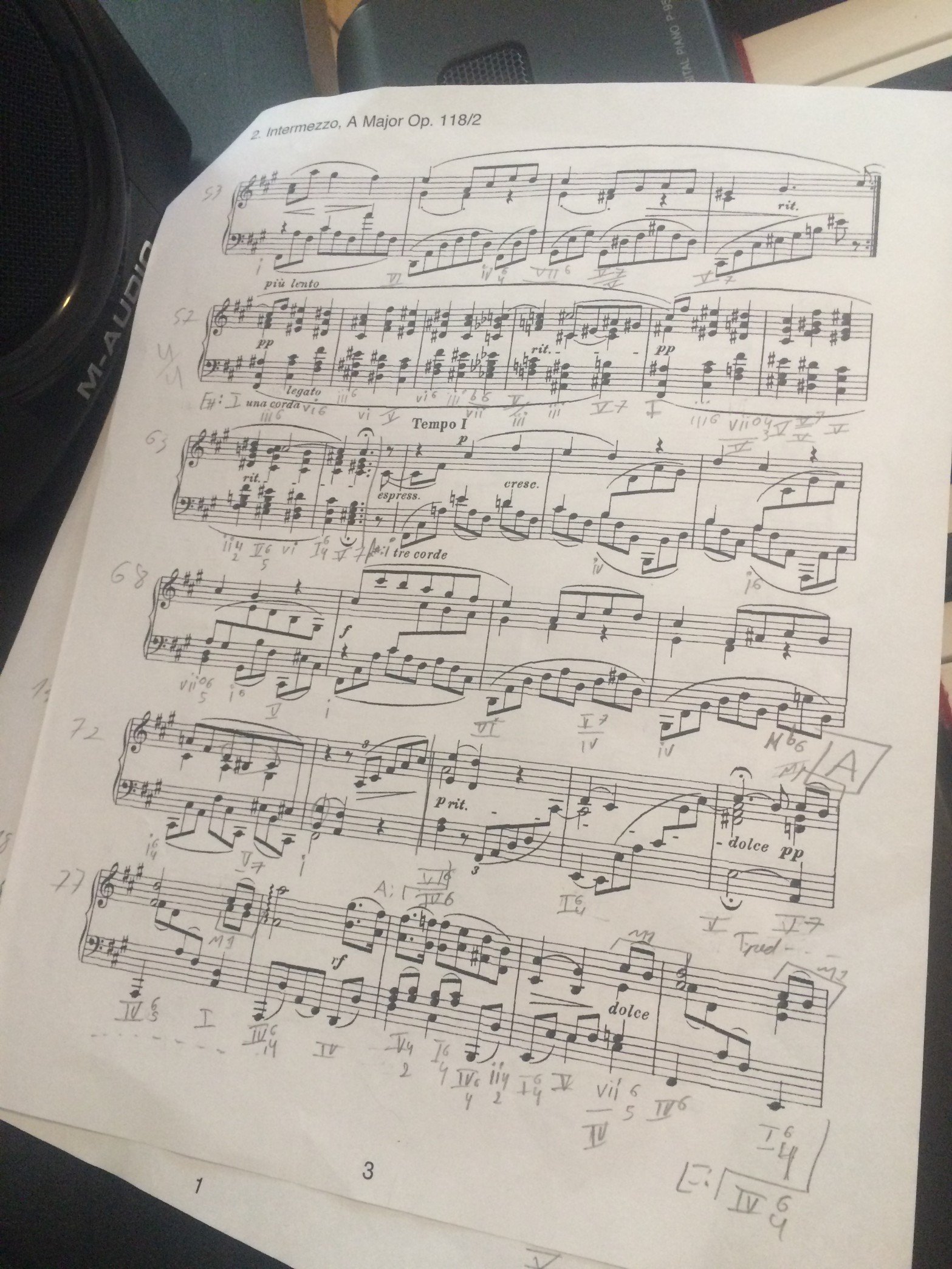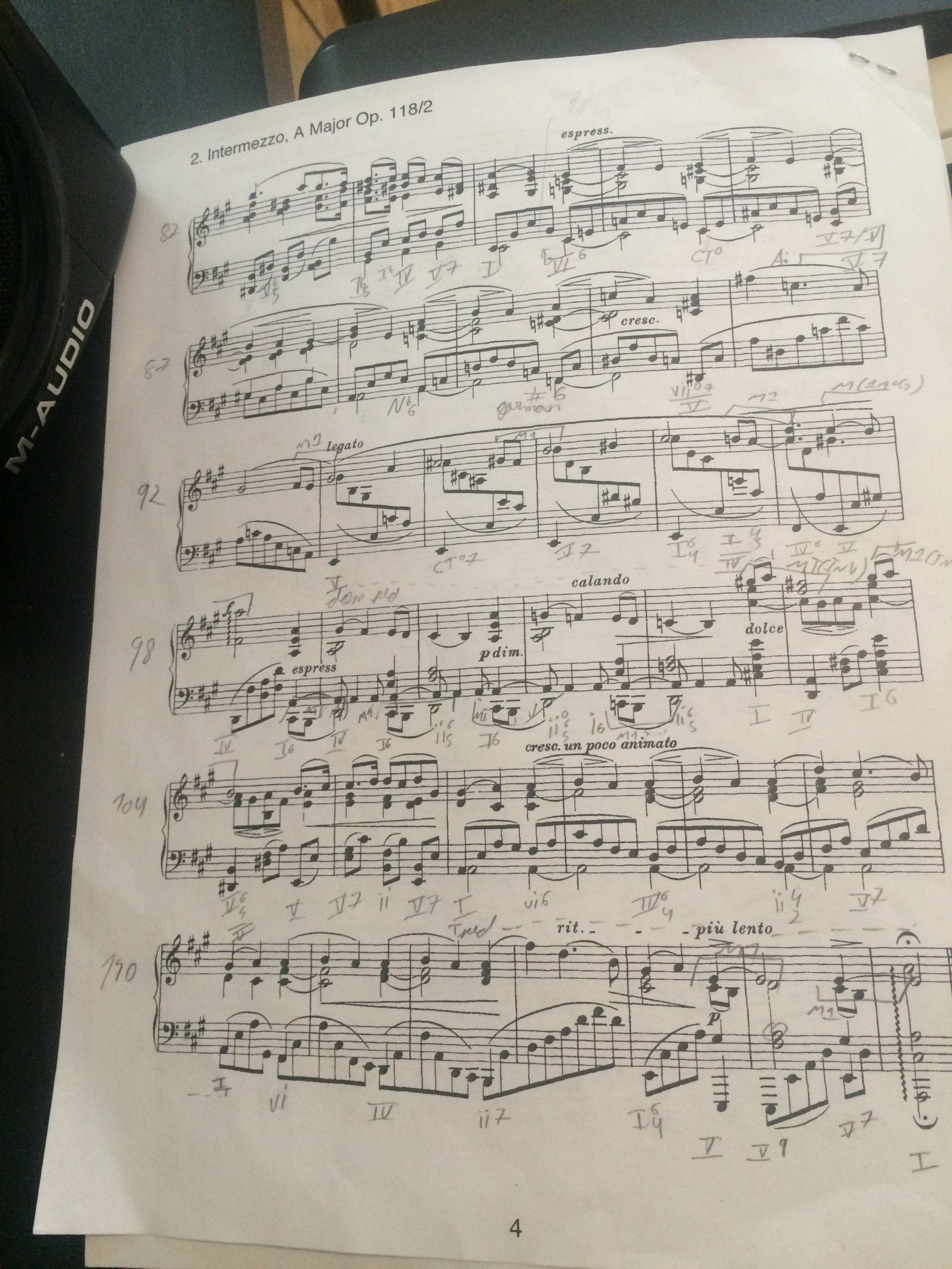Berklee College of Music
Intermezzo in A Major Musical Analysis
Brahms, Op. 118, No. 2
Luís F. Gomes Zanforlin
Analysis Classical/Romantic Music (MLAN-311-002) Clyde Witmyer
May/11/2017
Listening to the Intermezzo for the first time gave me the impression the piece was just a simple short piano piece with not much to it, however after a few times listening to the piece it became clear how many compositional devices Brahms deployed in this piece, devices such as canons, rhythmic and metric displacement as well as motivic and thematic development, all in one piece.
Form and inner form
The piece is written in ternary form A1 (m.1-48) B (m.49-76) A2 (m.77-116). The first A1 section is unconventionally shorter than the C by 21 measures, the A1 section also has its own small form in which the first themes are developed and repeated. Theme 1 (m.1-8) is repeated identically from m. 9 to m. 16, and theme 2 (m. 17-38) is divided into two sections, the first (m. 17 to 25) and the second, (m. 26-38), and a coda section (m. 38- 48) which is similar to the first part of the second theme (m. 17- 24). The coda ends the A1 section with a perfect cadence and Brahms gets to the B section through a direct modulation to the relative minor key of f# minor. This inner form paired with the choice of direct modulation and a change in texture gives the listener a temporary feeling that the A section is its own complete piece separate from the B section, however, this separation soon fades as Brahms starts developing motivic fragments from A1 on the B section, reconnecting the two sections into one piece.
The B section although shorter than the previews also has its own mini structure with distinctive textures, in this section all themes share motivic material which falls from f# e# d# and c# (e.g. Theme 3 (m.49-56) in f# minor is played twice, it modulates to F# major on measure 57 and starts a new texture in chorale style with a motivic
development from theme 3 in canonic imitation overlapping the top and middle voices. The chorale texture ends on measure 64 in a half cadence and resolves to i in f# minor in a new texture until measure 76. This new theme uses the same melodic material from the preview two sections in B but it modulates to A major on measure 74 which allows for a smoother transition to the last A2 (m.77) compared to the first transition from A1 to B.
Rhythm and meter
The first phrase of the piece starts at the pickup measure and ends on the on second beat of measure 4 starting the consequent phrase on beat three of the same measure, this pattern is repeated all throughout theme 1. On measure 16 theme 1 ends on the second beat of the measure and on the third beat of that same measure theme 2 begins, however unlike theme 1 the second theme has its strong pulse on the first beat of the theme, and that pulse now lies on the third beat of the measure creating a rhythmic displacement of a quarter note too early. The pulse shift is further emphasized by the melodic motive which starts and ends on the same note interrupted A by an upper neighbor tone. (e.g. 1)
The displacement accents beat three of every measure until measure 24 where the accented beat falls on beat one of the measure. A similar event happens on measure 38 where the section imitates measures 17 to 24 and the new displacement ends on measure 46. Another rhythmic event in the A section is a hemiola produced by the dotted quarter note melody on measure 29 which creates a two-beat measure on a 3/4 meter but this effect only lasts one measure and doesn’t displaces the pulse across the barline.
In the B section Brahms writes another rhythmic displacement, however this time it is also a metric displacement which gives the impression of 4/4 meter.
On measure 57 the four-note motive from the B section (e.g. 2) is performed on chorale style with quarter notes, since there are only three beats per measure in 3/4 time the strong pulse falls a quarter note ahead on every measure until measure 64 where the displacements end on the second beat with a fermata. Another interesting aspect of the metric displacement on measure 57 is the effect of the canonic imitation which starts a quarter note ahead (e.g.3) on the middle voice. This canonic imitation not only suggests a 4/4 meter but it also starts on the second beat of the measure further complicating the listener’s sense of meter and increasing the feeling of satisfaction on measure 65 where the implied meter returns to 3/4.
Personal Thoughts
This piece has a very organic feel in which the pacing, meter, and dynamics are constantly changing, eliminating any mechanical characteristic by always deceiving the listener’s notion of time and intensity. This changing character also affects the mood of the piece. In the beginning, the piece suggests the feeling of happiness and innocence, at the beginning of the B section (m.49) the mood shifts to a slightly more mature and sorrowful feeling due to the modulation to f# minor. The mood once more changes to a more hopeful tone on measure 57 where it modulates to F# major, it slowly returns to the original key through the diatonically related key of f# minor. On measure 77 (A2) at the
return to the first theme in its original key, I didn’t have the same feelings of innocence as in its first iteration. After all the motivic development of the B section, the return to the original theme creates a feeling of nostalgia, this feeling is emphasized by the disconnect between the A and B sections, it makes the return to the A2 a memory of A1 which is the most effective way I’ve experienced such an individualistic in a piece of music.







